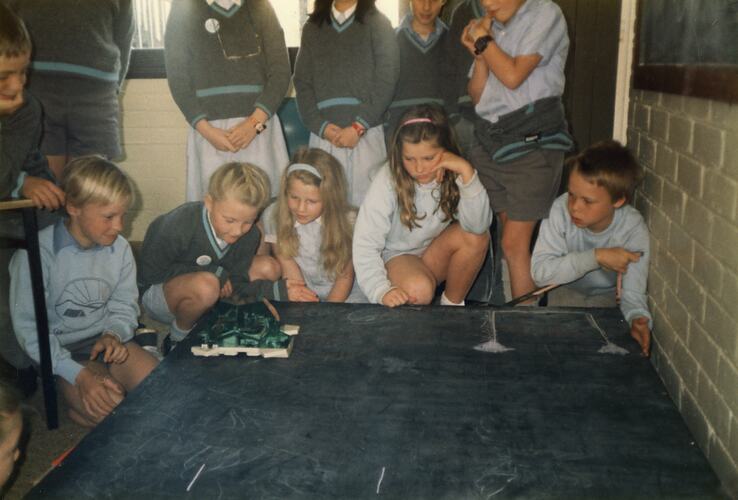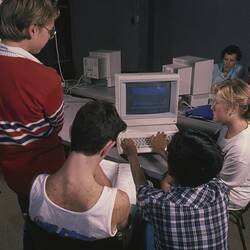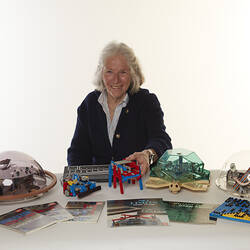Summary
Students at Geelong Grammar preparatory campus in Toorak learning to program Valiant Turtle robot. Photo taken by Liddy Nevile.
In this photograph the students, Harry Moore, Richard Holbeach, Georgie Nevile and Malcolm Skene have programmed a pattern to direct the robot Valiant Turtle into a 'garage' drawn on the floor. Microworlds, as they were called, were a feature of Sunrise activities. Having a goal, such as to park a programmable robot turtle within a square 'parking lot' required working with distance and turn as discrete concepts. The action was controlled by specifying a series of moves (forward being + moves and back being - moves) and turns (no motion forwards or back but on the spot turns (right x degrees or left x degrees). The idea was that within the constraints, children would have to negotiate the Turtle Geometry of the situation, and would very soon unconsciously master this aspect of the formal mathematical geometry actions and entities. Really good rich microworlds are more discovered then planned - what interests and attracts children is often unexpected but once identified, worth noting.
In later years, Microsoft Excel was discovered to be the perfect microworld in which to build a game of snakes and ladders - suitable for beginners and experts - as the community would say, with a low threshold and high ceiling.
This digital image forms part of the Sunrise Collection which includes educational robots, software and multimedia recordings of teachers and students exploring new possibilities with computer programming.
More Information
-
Collection Names
-
Collecting Areas
Images & Image Making, Childhood, Information & Communication, Museum History, Social Spaces & Youth
-
Person Depicted
-
Photographer
-
Place Depicted
-
Format
Digital file
-
Classification
-
Category
-
Discipline
-
Type of item
-
Keywords
Computing, Educational Technology, Educational Materials, Museums, Students, Classrooms, Computer Accessories, Computer Programming, microworlds, constructionism


